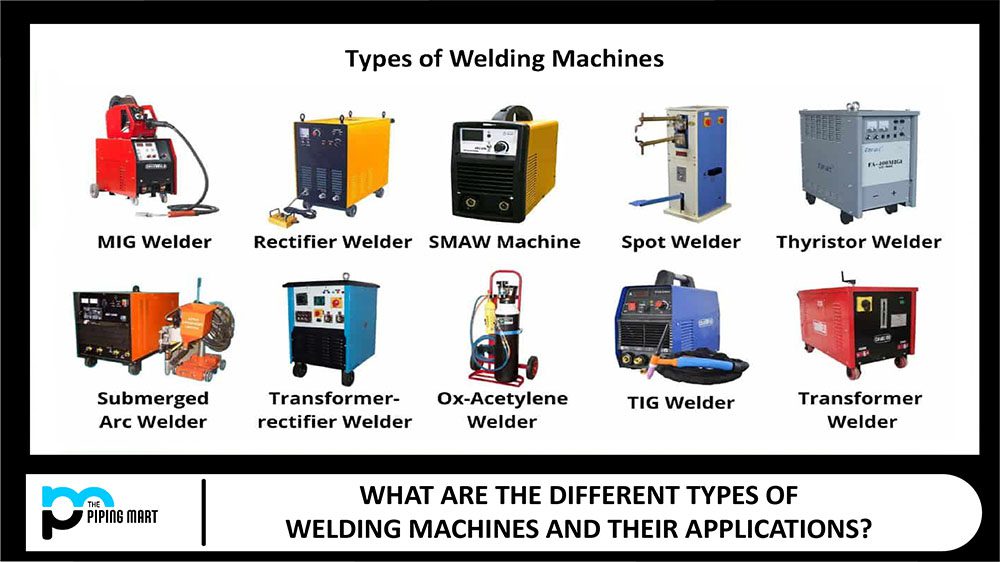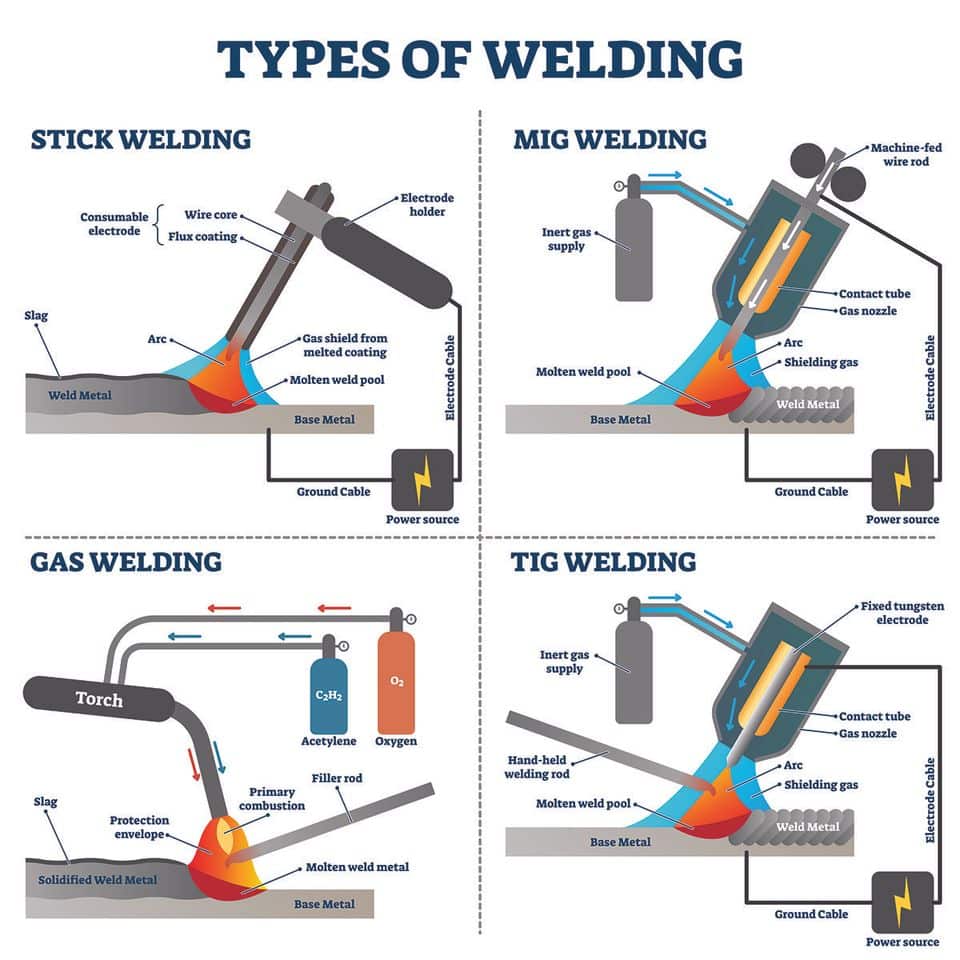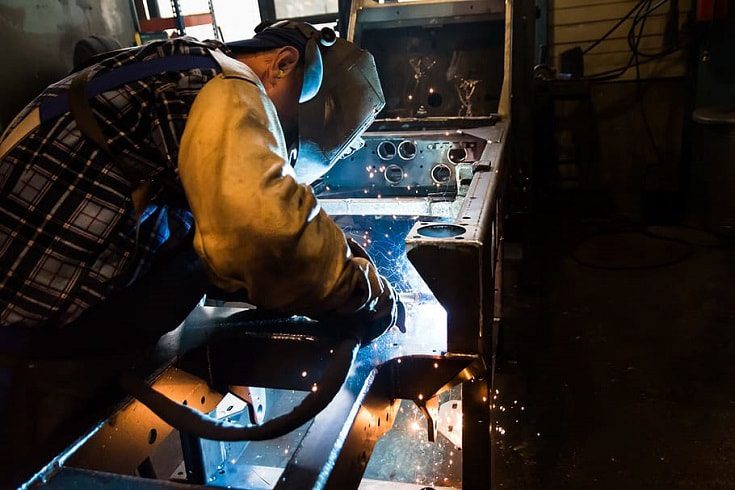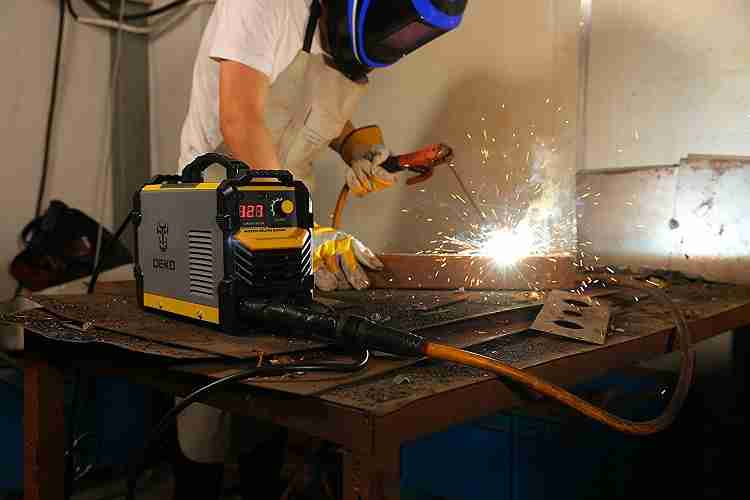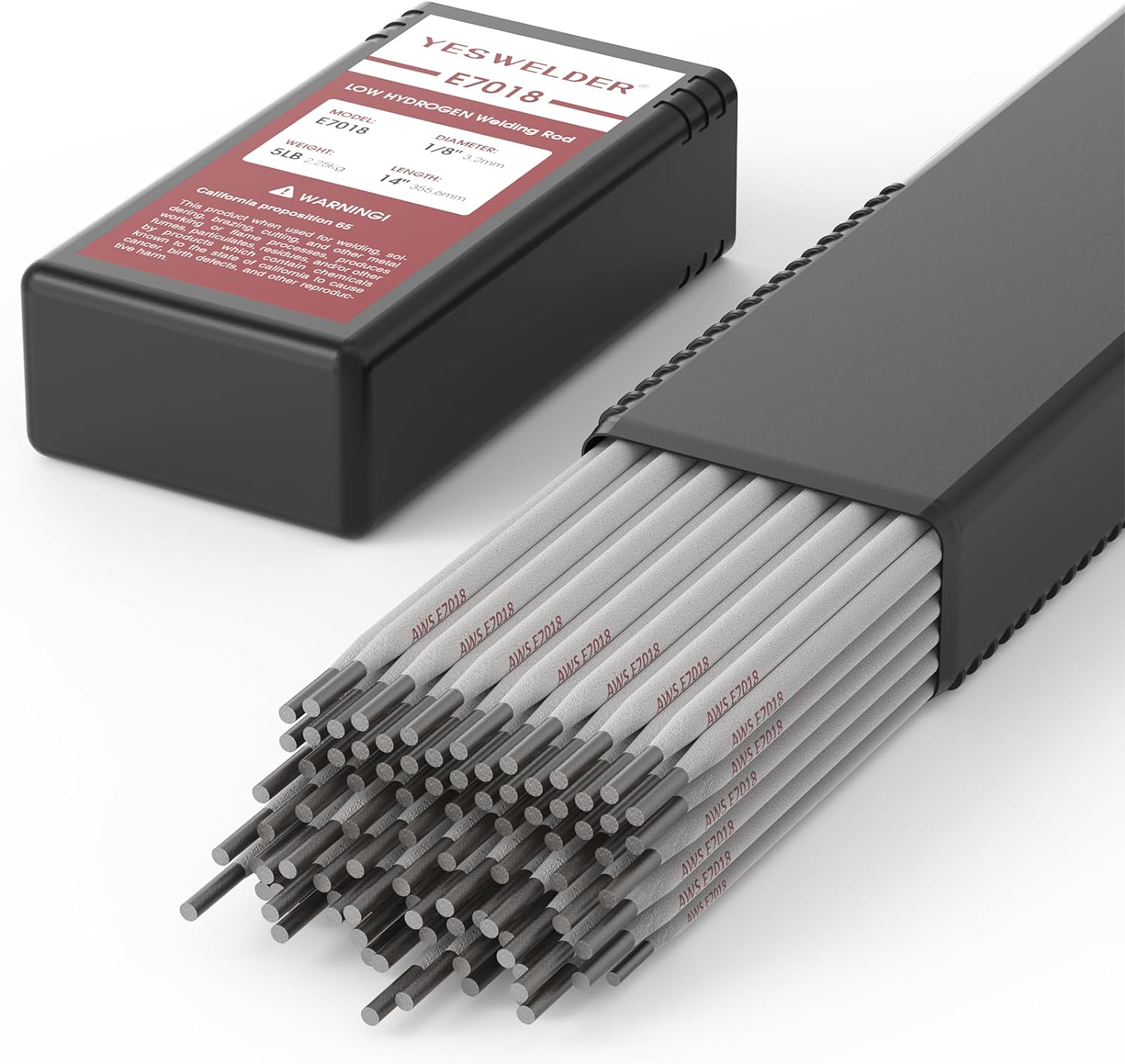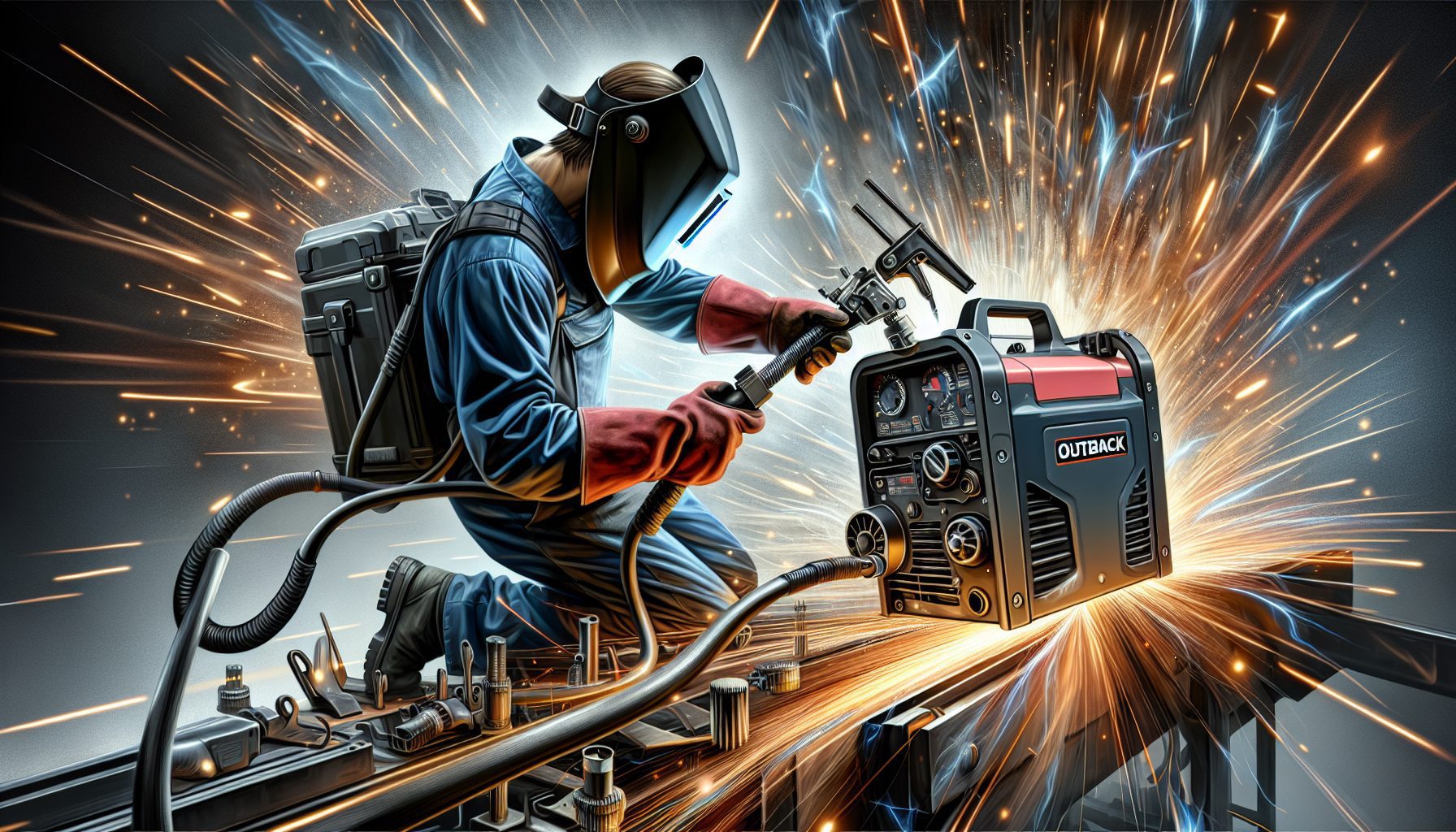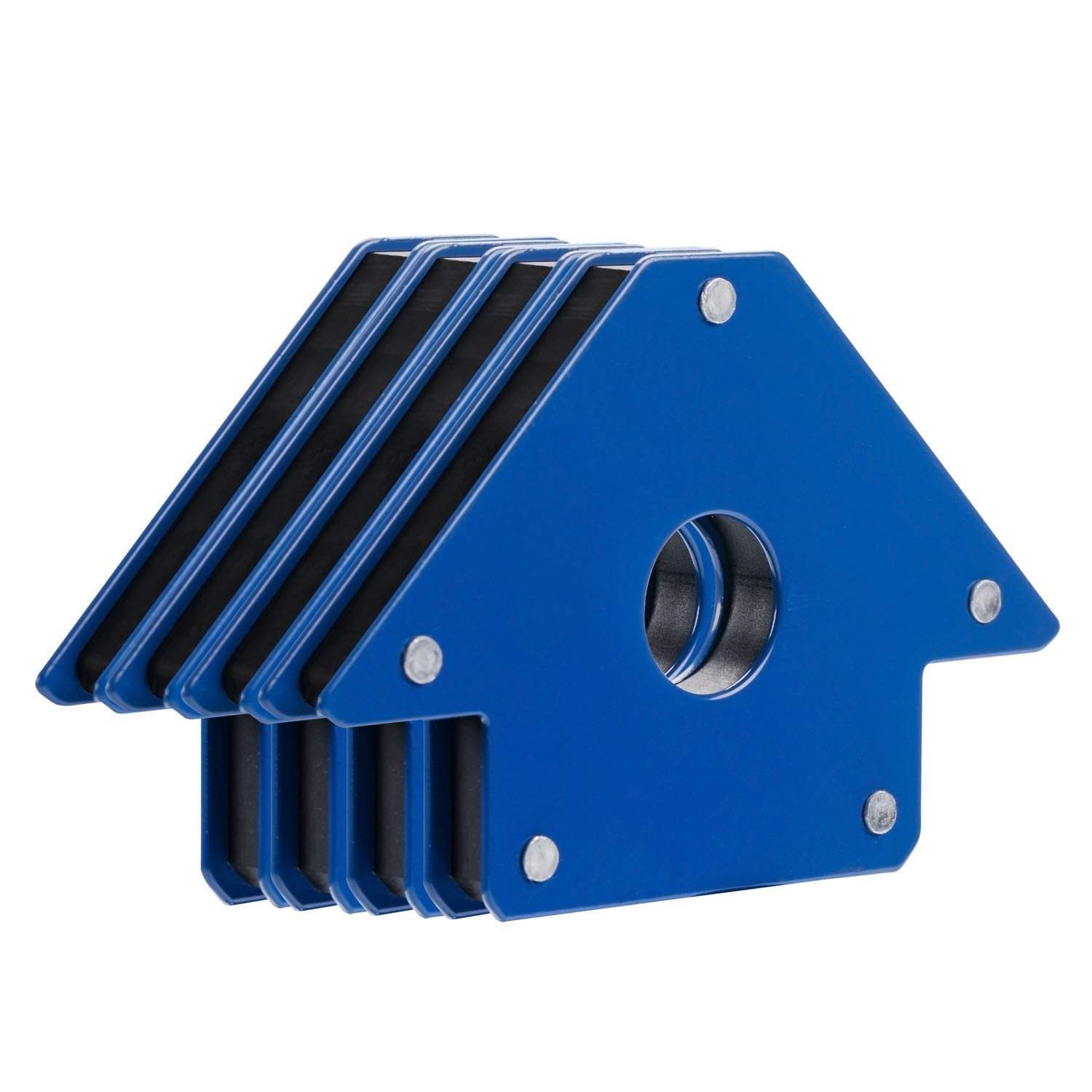Are you looking to enter the welding field but unsure which specialization is the most sought-after?
Well, look no further! In this article, we will explore the different types of welding and reveal which one is currently experiencing the highest demand.
Whether you are a beginner contemplating a career switch or a seasoned welder seeking new opportunities, this article will help you decide on the best field to pursue.
So, let’s get started and discover the most in-demand type of welding out there!
Automotive Welding
Introduction to automotive welding
Automotive welding is a crucial aspect of the automotive industry, as it is responsible for joining metal components together to create various automobile structures.
From the chassis to the body panels, automotive welding plays a significant role in ensuring vehicles’ structural integrity and safety. Welding in the automotive industry requires high precision and expertise, as the welds must withstand the stresses and strains encountered during vehicle operation.
Demand for automotive welders
With the constant growth and evolution of the automotive industry, the demand for skilled automotive welders is at an all-time high.
As new technologies are implemented and automobile designs become more complex, the need for welders who can adapt to these changes and possess specialized knowledge in automotive welding techniques is increasing.
Additionally, the stringent safety regulations and quality standards imposed on the automotive industry contribute to the high demand for skilled and certified welders.
Types of automotive welding
Various types of welding methods are used in automotive welding, each with advantages and applications. The most common types include MIG (Metal Inert Gas) welding, TIG (Tungsten Inert Gas), and spot welding.
MIG welding is preferred for its versatility and speed, as it allows for high productivity and is suitable for a wide range of materials and thicknesses. TIG welding, on the other hand, offers superior precision and control, making it ideal for welding thinner and more delicate components.
Spot welding is commonly used to join sheet metal, providing strength and efficiency in automotive applications.
Pipelines and Oil Rig Welding
Introduction to pipeline and oil rig welding
Pipeline and oil rig welding involves joining high-strength materials to construct pipelines, oil rigs, and other structures used in the oil and gas industry.
These welds must withstand extreme conditions, including high pressure, corrosive environments, and varying temperatures.
Pipeline and oil rig welding require specialized techniques and strict adherence to safety protocols to ensure the longevity and integrity of these critical structures.
Demand for pipeline and oil rig welders
As the need for oil and gas exploration and transportation continues to grow, so does the demand for pipeline and oil rig welders.
The construction and maintenance of pipelines and oil rigs require skilled welders who can work in challenging environments and follow stringent regulations.
Furthermore, with the aging infrastructure in many countries, there is a need for welders who can repair and replace existing pipelines and rigs to ensure their continued operation.
Types of pipeline and oil rig welding
The most commonly used welding methods in pipeline and oil rig welding are Shielded Metal Arc Welding (SMAW), also known as stick welding, and Gas Tungsten Arc Welding (GTAW), commonly called TIG welding.
SMAW is favored for its versatility and reliability in outdoor conditions, making it suitable for pipeline construction and maintenance. GTAW, on the other hand, provides precise control over the welding process, making it ideal for critical joints and repairs that require high-quality welds.
Aerospace Welding
Introduction to aerospace welding
Aerospace welding is a highly specialized field that involves joining materials for constructing aircraft, spacecraft, and other aerospace-related structures.
The welds in aerospace applications must withstand extreme conditions, such as high temperatures, vibrations, and stress while maintaining the highest level of integrity and safety. Aerospace welding requires meticulous attention to detail and adherence to stringent quality standards to ensure the reliability and durability of aircraft.
Demand for aerospace welders
The aerospace industry demands highly skilled welders with in-depth knowledge of aerospace-specific materials and welding techniques.
With the increasing demand for air travel and the constant development of new aircraft designs, there is a significant need for aerospace welders who can handle complex and critical welding tasks.
Due to the critical nature of aerospace welds, aerospace manufacturers have strict certification requirements, further driving the demand for qualified welders.
Types of aerospace welding
Various techniques are employed in aerospace welding depending on the specific materials and components being joined.
Gas Metal Arc Welding (GMAW), commonly called MIG welding, is often used in aerospace applications due to its high deposition rate and suitability for joining aluminum alloys.
Laser Beam Welding (LBW) and Electron Beam Welding (EBW) are also employed for precise and intricate welds, especially in aerospace structures where heat-affected zones must be minimized.
Construction Welding
Introduction to construction welding
Construction welding is vital in the building and infrastructure development industry, providing the necessary structural strength and durability to various construction projects.
Welding is utilized in constructing bridges, buildings, highways, and other infrastructure components, where sturdy and reliable joints are essential. Construction welding is diverse, from welding reinforcing bars in concrete structures to fabricating steel components and erecting structural steel frames.
Demand for construction welders
With cities’ continuous growth and urbanization, the demand for skilled construction welders remains strong.
Construction projects require welders who possess practical knowledge of construction processes, work with materials such as steel and concrete, and can accurately read and interpret blueprints and engineering drawings. Additionally, the need for maintenance and repair work in existing infrastructure further contributes to the demand for construction welders.
Types of Construction Welding
Construction welding covers many methods, each tailored to suit specific construction needs. Shielded Metal Arc Welding (SMAW) is commonly used due to its portability and versatility, making it suitable for on-site construction welding tasks.
Flux-Cored Arc Welding (FCAW) provides high deposition rates, making it suitable for heavy-duty welding in construction projects. Moreover, Submerged Arc Welding (SAW) is often utilized for welding thick metal plates and producing sound welds, commonly seen in structural steel fabrication.
Shipbuilding Welding
Introduction to shipbuilding welding
Shipbuilding welding involves constructing and repairing ships and other marine vessels using various welding techniques and materials appropriate for maritime environments.
Ship structures must withstand harsh sea conditions, including exposure to saltwater, extreme temperatures, and constant vibrations. Shipbuilding welding requires specialized knowledge and expertise to ensure the seaworthiness and longevity of these vessels.
Demand for shipbuilding welders
With the global shipping industry remaining a vital means of transportation for goods and people, there is a consistent demand for skilled shipbuilding welders.
Shipbuilding companies require welders who can work with materials such as steel and aluminum, possess knowledge of naval architecture and construction regulations, and execute new construction and repair welding tasks. Additionally, the need for regular maintenance and refitting of existing ships further contributes to the demand for shipbuilding welders.
Types of Shipbuilding Welding
In shipbuilding, various welding methods are employed to accommodate the specific requirements of different ship components.
Shielded Metal Arc Welding (SMAW), Gas Metal Arc Welding (GMAW), and Flux-Cored Arc Welding (FCAW) are commonly utilized due to their versatility and suitability for welding thick metal plates often encountered in shipbuilding.
Electron beam welding and friction stir welding are also employed in specialized applications, such as joining thin, lightweight materials or aluminum structures.
Structural Steel Welding
Introduction to structural steel welding
Structural steel welding involves joining steel components to construct buildings, bridges, and other structures with significant load-bearing requirements.
Steel is favored for its strength and durability, making it a popular choice in construction projects. Structural steel welding requires precise and efficient welding techniques to ensure the integrity and stability of these structures.
Demand for structural steel welders
As the construction industry thrives, the demand for skilled structural steel welders remains steady. Structural steel welders are sought after by construction companies, steel fabricators, and bridge builders who require welders capable of working with heavy materials and executing high-quality welds.
The ability to interpret complex blueprints and engineering drawings and proficiency in welding inspection and quality assurance are highly valued skills in this field.
Types of Structural Steel Welding
Several welding methods are commonly used in structural steel welding, each with advantages and applications. Shielded Metal Arc Welding (SMAW), commonly known as stick welding, is often employed due to its portability and versatility in various construction settings.
Flux-Cored Arc Welding (FCAW), with its high deposition rates and deep penetration capabilities, is suitable for welding thick steel plates. Moreover, Submerged Arc Welding (SAW) is preferred for its high productivity and ability to weld thick steel sections.
Manufacturing and Fabrication Welding
Introduction to manufacturing and fabrication welding
Manufacturing and fabrication welding encompasses joining metal components in producing various goods, ranging from small consumer products to large industrial machinery.
Welding is critical in the manufacturing industry, enabling efficient and cost-effective production of complex metal structures. Manufacturing and fabrication welding require high precision, consistency, and adaptability to meet the demands of different production processes.
Demand for manufacturing and fabrication welders
With the continuous advancement of manufacturing technology and the need for customized and innovative products, the demand for skilled manufacturing and fabrication welders remains high.
Manufacturers require welders who can work with various metals, such as steel, aluminum, and stainless steel, possess proficiency in reading technical drawings and specifications, and can operate welding machinery and equipment effectively. Furthermore, the ability to adapt to new technologies, such as robotic welding systems, adds value to welders in this field.
Types of manufacturing and fabrication welding
Various welding methods are employed in manufacturing and fabrication welding, depending on the specific requirements of the production process. Gas Metal Arc Welding (GMAW), also known as MIG welding, is commonly used for its versatility, speed, and suitability for various materials and thicknesses.
Tungsten Inert Gas (TIG) welding is favored for its precision and control, making it suitable for welding delicate and thin materials. Additionally, Resistance Spot Welding (RSW) is employed to rapidly join sheet metal components.
Nuclear Welding
Introduction to nuclear welding
Nuclear welding encompasses the joining of metal components used in constructing and maintaining nuclear facilities, including power plants and research reactors. Welding in the nuclear industry requires the highest level of precision, as weld quality is critical to ensure the safety and reliability of these facilities.
Nuclear welding involves strict adherence to stringent regulations, specialized techniques, and extensive quality control measures.
Demand for nuclear welders
As the demand for nuclear energy continues to grow globally, there is an ongoing need for qualified nuclear welders.
The construction, operation, and maintenance of nuclear facilities require welders with extensive knowledge of nuclear regulations, materials, and welding testing methods. The nuclear industry demands welders with exceptional attention to detail, the ability to work under strict safety protocols, and a commitment to ensuring the highest weld quality and integrity.
Types of Nuclear Welding
Nuclear welding often employs traditional methods and specialized techniques designed specifically for nuclear applications. Gas Tungsten Arc Welding (GTAW), commonly known as TIG welding, is often utilized for its precise control and ability to produce high-quality welds in various materials.
Additionally, Electron Beam Welding (EBW) and Laser Beam Welding (LBW) are employed for their capability to create deep, narrow, and highly controlled welds required in nuclear applications.
Robotic Welding
Introduction to robotic welding
Robotic welding involves using automated systems to perform welding tasks, replacing or supplementing manual welders. Robotic welding systems utilize pre-programmed instructions to execute precise welds on various components and materials.
With advancements in robotics and automation technology, robotic welding has become increasingly popular in industries that require high production rates, consistent weld quality, and improved efficiency.
Demand for robotic welders
As industries continue to seek ways to streamline production processes and increase efficiency, the demand for robotic welders has risen significantly. Robotic welding systems offer numerous advantages, including increased productivity, reduced human error, and improved weld quality.
Companies in the automotive, manufacturing, and construction industries, among others, utilize robotic welding to meet the growing demand for mass-produced goods, ensure consistent weld quality, and minimize production costs.
Types of robotic welding
Robotic welding systems utilize various techniques depending on the application’s specific requirements. Gas Metal Arc Welding (GMAW) and Tungsten Inert Gas (TIG) welding are commonly employed in robotic welding, offering versatility, speed, and precision.
Additionally, Resistance Spot Welding (RSW) is frequently used in automated systems to join sheet metal components rapidly. With technological advancements, robotic welding has expanded to incorporate laser and friction stir welding, providing even more possibilities for automated welding processes.
Underwater Welding
Introduction to underwater welding
Underwater welding is a challenging and specialized field that involves welding in submerged environments, typically underwater. It is primarily used in marine construction, offshore oil and gas operations, and underwater repair.
Underwater welders face unique challenges, such as working in an oxygen-deprived environment, dealing with high water pressure, and managing the limitations of working underwater.
Demand for underwater welders
The demand for skilled underwater welders remains substantial, driven by the need for maintenance and repair work in marine structures and offshore installations.
The offshore oil and gas industry relies on underwater welders to construct and maintain underwater pipelines, drilling rigs, and underwater platforms. Additionally, the shipping industry requires underwater welders to repair ship hulls and components below the waterline.
Skilled underwater welders are sought after for their ability to work under challenging conditions while ensuring the structural integrity of underwater structures.
Types of underwater welding
Underwater welding utilizes two primary methods: Dry Welding and Wet Welding. Dry Welding involves creating a sealed chamber around the welding area, allowing divers to perform welding tasks in a dry environment.
It provides better weld quality and allows for the use of traditional welding techniques such as Shielded Metal Arc Welding (SMAW) and Gas Tungsten Arc Welding (GTAW).
Wet Welding, on the other hand, is performed directly underwater without needing a dry environment. It utilizes a particular waterproof electrode and employs Shielded Metal Arc Welding (SMAW) or Flux-Cored Arc Welding (FCAW) methods to create submerged welds.
In conclusion, various welding disciplines play critical roles in various industries, each with unique demands and challenges. From automotive to aerospace, construction to underwater, the demand for skilled welders remains high as the need for solid and reliable welds continues to grow.
By understanding the specific requirements and techniques involved in each welding discipline, individuals can pursue rewarding careers in these industries while contributing to the construction, infrastructure, and development of our modern world.




